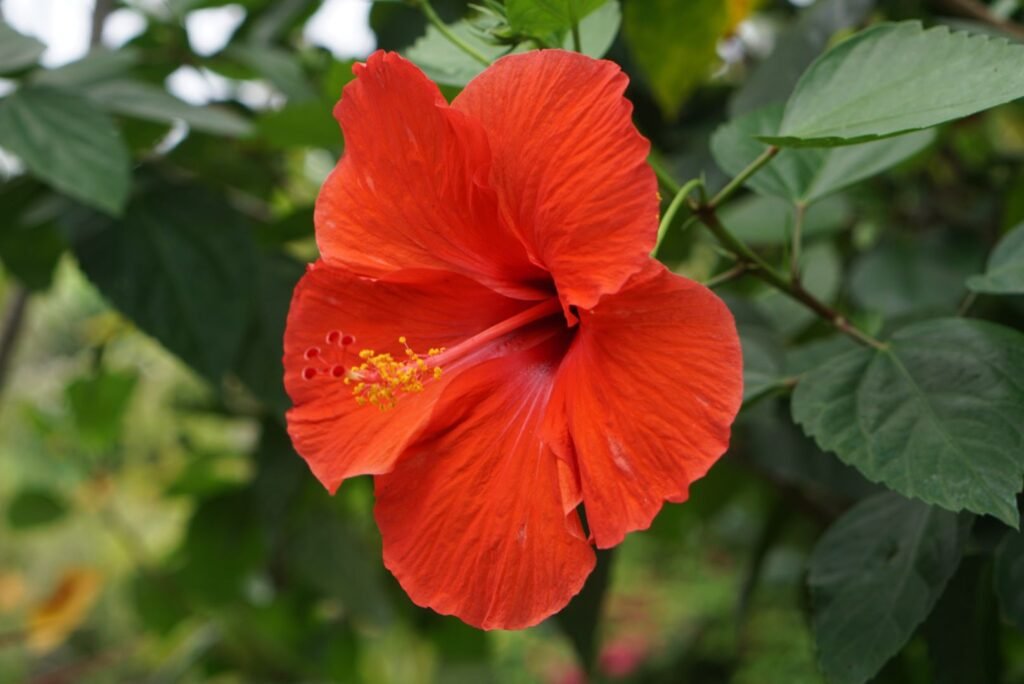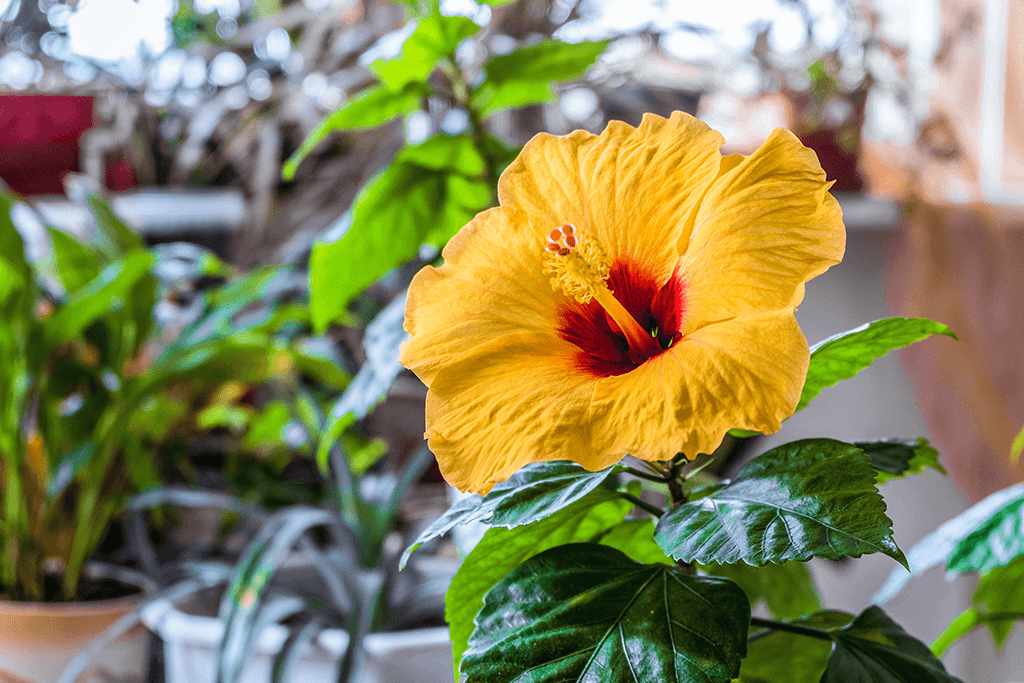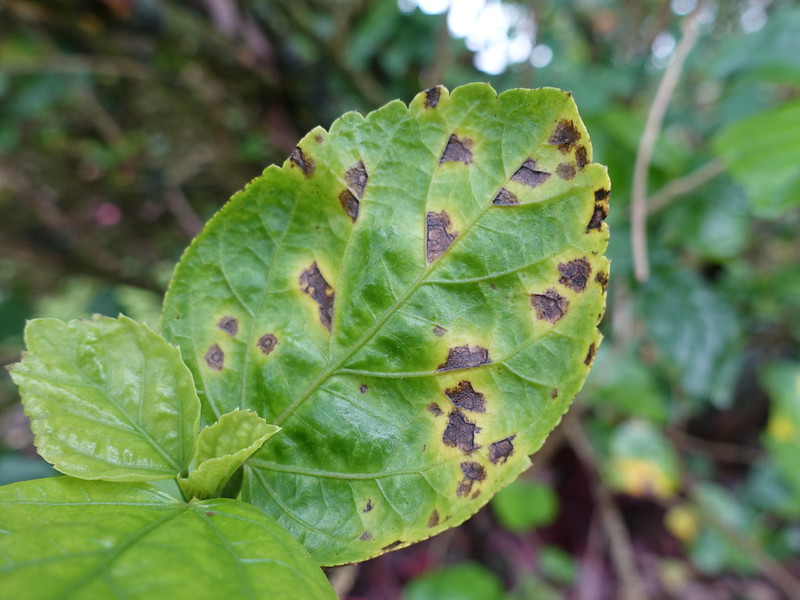

How to Grow Hibiscus: Tips for Adding Vibrant Tropical Colors to Your Garden
If you’re craving a splash of tropical color in your garden, hibiscus is the perfect plant for you. Known for its huge, stunning flowers that can resemble dinner plates, hibiscus is sure to impress and brighten up any outdoor space. Plus, these plants aren’t just pretty—they also attract butterflies and hummingbirds, adding even more life to your garden.
Whether you’re new to gardening or a seasoned pro, this guide will give you all the tips you need to successfully grow hibiscus and enjoy these beautiful flowers all summer long!
What is Hibiscus?
:max_bytes(150000):strip_icc()/100921513_preview-2000-8d6cd7f62d154ffb8c39c78b25cb96dc.jpg)
Hibiscus is a flowering plant that belongs to the mallow family, and it comes in several varieties, including annual and perennial types. For this guide, we’ll focus on the hardy perennial hibiscus, which can thrive in cooler climates (USDA zones 5-10) and bloom year after year. Hardy hibiscus can grow as tall as 8 feet, producing large, eye-catching flowers similar to hollyhocks.
These tropical beauties are typically seen in warmer climates but can also grow well in non-tropical regions with the right care.
Here’s a table summarizing the popular hibiscus varieties you might want to try for your garden:
These varieties each bring something special to the table, whether it’s vibrant color, unique size, or early blooming. Choose the one that best fits your garden’s style!
How to Grow Hibiscus in Your Garden

Here’s a table summarizing the popular hibiscus varieties you might want to try for your garden:
| Hibiscus Variety | Flower Size | Plant Height | Description |
|---|---|---|---|
| Scarlet Swamp Hibiscus | 10-12 inches wide | 3-7 feet tall | Features large, 5-petal flowers in bright red. |
| Lady Baltimore | Large, pink flowers with a dark center | Varies, typically 4-6 feet tall | One of the earliest bloomers with stunning pink flowers. |
| Cherry Brandy | 8-10 inches wide | 4-5 feet tall | Deep red flowers with a bold, vibrant look. |
| Midnight Marvel | Deep scarlet | 4 feet tall | Rich, dark red flowers on a compact plant. |
| Disco Belle Pink | 8 inches wide | 2 feet tall | Dwarf variety with showy pink flowers. |
These varieties each bring something special to the table, whether it’s vibrant color, unique size, or early blooming. Choose the one that best fits your garden’s style!
Growing hibiscus in your yard can be an easy and rewarding process, as long as you pay attention to the right factors.
When and Where to Plant Hibiscus

Timing for Planting:
Hibiscus needs warm soil and air temperatures to grow successfully, so the best time to plant them is once both the soil temperature and air temperature have risen above 65°F. This generally means waiting until after your last spring frost date.
Location:
- Hibiscus plants thrive in full sun, so choose a location that gets at least 6 hours of sunlight per day. For the best results, aim for 8 hours of full sun.
- Less sunlight can lead to fewer flowers, and the plant may become leggy with overly tall stems.
- The soil should be well-draining, as hibiscus don’t like to sit in standing water. If your soil is heavy or compacted, amend it with organic compost for better drainage.
- Hibiscus is pretty adaptable to various soil types but loves rich, well-drained soil that’s been worked with plenty of organic matter.
How to Plant Hibiscus
Planting hibiscus is straightforward, especially if you buy young plants from a nursery rather than starting from seed (which can take longer).
- Digging the Hole: Use a shovel to dig a hole that’s about twice as wide and deep as the pot your hibiscus came in.
- Planting: Place the hibiscus plant in the hole so that the top of the root ball is level with the ground. Avoid planting it too deep.
- Watering: Give the plant a deep watering right after planting. For the first week or so, water frequently to help the roots establish themselves in their new home.
How to Care for Hibiscus
Hibiscus plants are relatively easy to care for, but to keep them healthy and flowering, here are a few care tips:
- Watering: Hibiscus need a lot of water, especially when they’re first getting established. Water 2-3 times a week during the first few months. Once the plant is established, water regularly during dry periods.
- Mulching: Apply a layer of mulch around the base of the plant to help conserve moisture and protect the roots in winter.
- Deadheading: As the flowers fade, remove the spent blooms to encourage new ones. This will keep your plant blooming all season.
- Fertilizing: In the spring, apply compost or a balanced fertilizer to encourage new growth and blooms. A light feeding can help boost your hibiscus plant’s vitality.
- Winter Care: Since hibiscus dies back in the winter, cut the stems to the ground when this happens. It will regrow in the spring.
Troubleshooting: Hibiscus Pests & Diseases

Hibiscus can sometimes attract a few pests, but they’re easy to manage with the right approach. Common hibiscus pests include:
- Aphids
- Japanese Beetles
- Scales
- Mealybugs
- Whiteflies
To control pests, you can spray the leaves with soapy water or use insecticidal soap. A natural option is using Neem Oil. Encouraging beneficial insects like ladybugs can also help keep pests in check.
Diseases: Hibiscus can be susceptible to fungal infections that affect the stems and leaves. To avoid disease, make sure your hibiscus has plenty of space for air circulation, avoid overwatering, and clean up any fallen leaves or debris to reduce the risk of soil contamination.
Sure! Here are the additional FAQs without the table format:
Additional Hibiscus FAQs
How often should I water hibiscus?
Hibiscus needs regular watering, especially when they’re first getting established. Water them 2-3 times a week until they are well-rooted. Once the plant is established, water deeply during dry spells, ensuring the soil is moist but not waterlogged.
Can hibiscus survive winter?
Hardy hibiscus can survive winter in USDA zones 5-10. In colder regions, the plant may die back to the ground during winter but will typically regrow from the roots in the spring. To protect the plant in very cold climates, consider adding a layer of mulch around the base.
Do hibiscus need special soil?
Hibiscus prefers rich, well-draining soil. Before planting, it’s beneficial to mix in organic compost or other organic matter to help improve the soil structure. Good drainage is key, as hibiscus do not like to sit in waterlogged soil.
Can I grow hibiscus indoors?
Yes, you can grow hibiscus indoors, but they need a lot of sunlight to thrive. Place them near a sunny window where they can get at least 6-8 hours of direct sunlight each day. If natural light is insufficient, consider using grow lights to supplement.
Why aren’t my hibiscus blooming?
If your hibiscus isn’t blooming, it might be due to a few reasons: insufficient sunlight, over-fertilization, or pruning at the wrong time. Ensure the plant is getting 6-8 hours of direct sunlight, prune old growth in the winter (as they bloom on new growth), and use a balanced fertilizer.
How do I propagate hibiscus?
You can propagate hibiscus through cuttings or seeds. The most common and efficient method is taking a 4-6 inch cutting from a healthy plant and rooting it in soil or water. Growing hibiscus from seed can be a longer process, but it’s also possible.
Do hibiscus attract bees?
Yes, hibiscus flowers attract bees and other pollinators. This makes them an excellent choice for a pollinator-friendly garden. The vibrant flowers draw in bees, butterflies, and hummingbirds, helping your garden thrive naturally.
What is the best fertilizer for hibiscus?
Hibiscus plants thrive with a balanced fertilizer, such as a 10-10-10 (nitrogen, phosphorus, potassium) mix. Apply fertilizer in early spring when the plant begins to show new growth and again in midsummer to encourage continued blooming. Avoid over-fertilizing, as it may result in too much foliage growth and fewer flowers.
I hope these answers help! Let me know if you need more info.
Conclusion
With their vibrant colors and large, tropical blooms, hibiscus plants can truly transform your garden into a paradise. Whether you’re growing them in the ground or in containers, these hardy perennials are relatively easy to care for, offering long-lasting beauty throughout the summer months. By choosing the right location, providing adequate care, and keeping an eye on pests, your hibiscus will thrive and reward you with stunning flowers year after year. Happy gardening!
